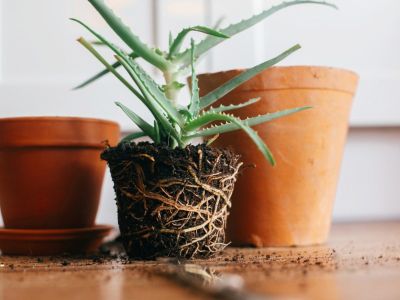What Causes Root Bound Plants?
Oftentimes, root bound plants are simply plants that have grown too big for their containers. Healthy growth will cause a plant to develop a root system that is too big for its container. Occasionally, a plant may be put into a container that is too small to begin with. This will also cause a plant to become quickly root bound. In short, a root bound plant is just that, a plant whose roots are “bound” by some kind of barrier. Even plants growing outside in the ground can become root bound if their roots are caught between several solid barriers, like foundation walls, footers or pipes.
How Do I Know if a Plant is Root Bound?
Root bound symptoms above the soil are hard to pinpoint and often look like symptoms of an under-watered plant. The plant may wilt quickly, may have yellow or brown leaves, especially near the bottom of the plant and may have stunted growth. A severely root bound plant may also have a container that is pushed out of shape or cracked by the pressure of the roots. It may also have roots that are showing above the soil. To truly tell if a plant is root bound, you have to get a look at the roots. In order to do this, you will need to remove the plant from its pot. A plant that is only a little root bound will come out of the container easily, but a badly root bound plant may have trouble being removed from the container. If this occurs and the pot is made of a flexible material, you can squeeze the pot in different directions to loosen the root bound plant. If the container is not flexible, you can use a long thin serrated knife or some other long thin sturdy object to cut around the plant. Try to stay as close to the edge of the container as possible. In very severe root bound plants, you may have no option but to break the container the plant is growing in to remove it. Once the plant is out of its container, examine the rootball. You can make a cut down the side of the rootball if necessary to examine deeper into the rootball. If the roots wrap around the rootball a little bit, the plant is only a little root bound. If the roots form a mat around the rootball, the plant is very root bound. If the roots form a solid mass with little soil to be seen, the plant is severely root bound. If your plant is root bound, you have a few options. You can either repot the plant in a bigger container, prune the roots and repot in the same container or divide the plant, if appropriate, and repot the two divisions. For some root bound plants, you may simply want to leave them root bound. There are a few plants that grow best when root bound.
